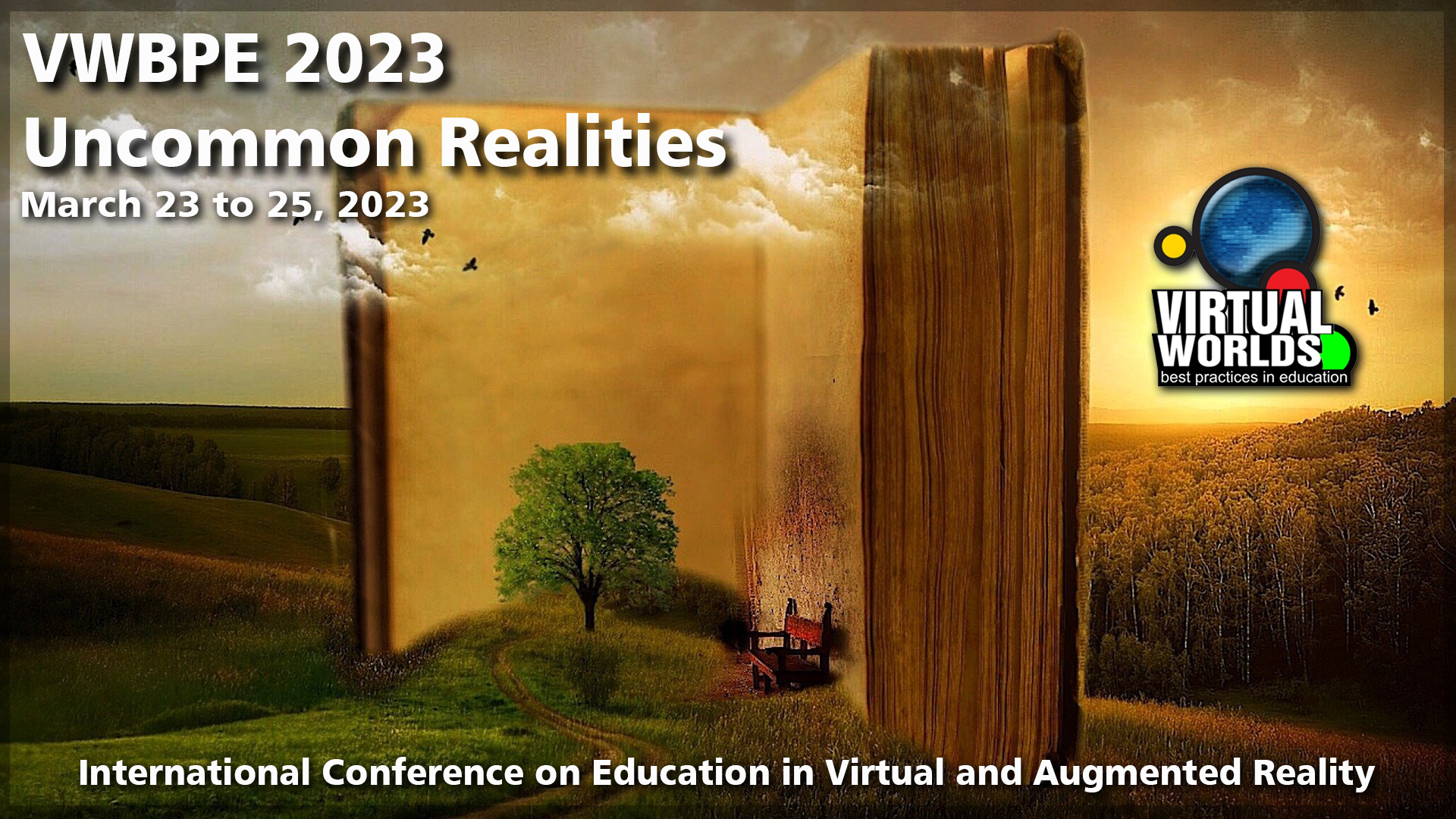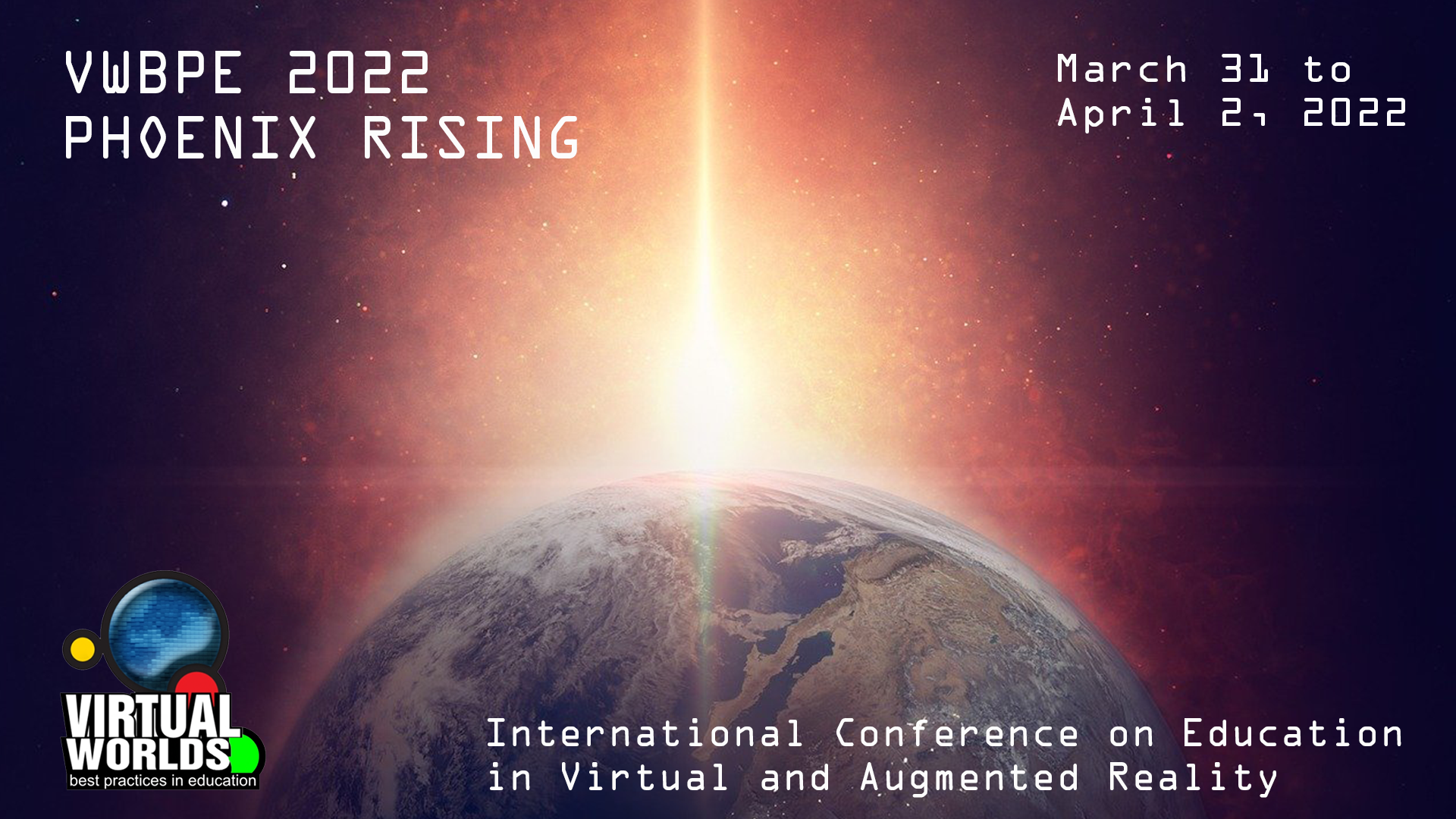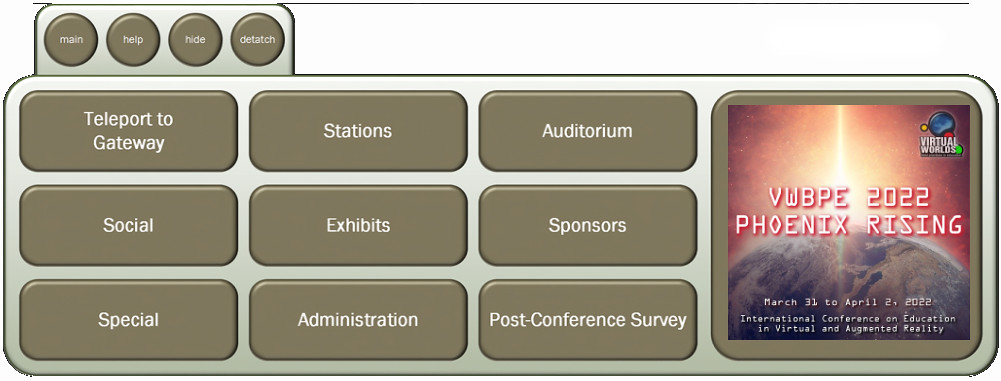
Update: March 16th, 2024: Regarding SL Voice and capabilities, as mentioned in the latter part of this summary, please also refer to: 2024 week #11: SL TPVD summary: new approach to voice in SL for information on the new WebRTC for Voice in SL.
On Thursday, March 14th, 2024 Grumpity Linden, the Lab’s Senior Vice President of Operations, along with Kali and Signal Linden joined Phelan Corrimal for the annual Above the Book session at the Virtual Worlds Best Practice in Education (VWBPE) conference, entitled What’s Up At the Lab.
The function of the session is to explore what’s “new” at Linden Lab / with Second Life and their impact on educators and non-profit organisations using the platform.
The following is a summary of the session covering the core topics raised. The notes provided have been taken directly from the official video of the session, which is embedded at the end of this article. Time stamps to the video are also provided to the relevant points in the video for those who wish to listen to specific comments.
Notes:
- This is a summary, not a full transcript, and items have been grouped by topic, so may not be presented chronologically when compared to the video.
- Timestamps are included to allow a direct jump to a subject / comment.
A Little Background
Grumpity Linden: is responsible for the Second Life Product and Engineering teams. She originally started at LL whilst working for The Product Engine, and was involved in the development of Viewer 2 (as designed by 80/20 Studio), prior to joining LL full-time in 2014. Her role covers all aspects of product development and platform engineering, and as well as having a strong technical background, she also brings a strong element of interpersonal skills and psychological expertise to the Lab’s management team via her studies at the Johns Hopkins University.
Kali Linden: is now a Director of Engineering at the Lab, reporting into Grumpity, specifically focused on the Lab’s web properties (e.g. lindenlab.com, secondlife.com, the Marketplace, etc.) and associated UI and API design. She has a keen focus on matters pertaining to content creation and also in working in the non-profit sphere, describing herself as a “Nonprofit-preneur” as well as a “Nerd-Gamer”.
Signal Linden: is the Director of the Second Life Server and Viewer engineering and development teams. He has been involved with Second Life since 2008, and joined Linden Lab in 2015 by way of the likes of Amazon. He is a strong believer in the potential of virtual worlds, and a keen proponent of open-source software and collaborative development. He has perhaps most recently been visible as the communicator of, and driving force behind, the Lab’s moves to the use of Github to manage viewer development and issue tracking for their engineering and development environments.
Product Development Path
The glTF™ Roadmap
[Video: 4:43-19:26]
- When SL introduced mesh import (2011), the COLLADA (Collaborative Design Activity) interchange file format interactive 3D applications was selected for use within SL for importing mesh models to the platform. This decision was based on its widespread (at the time) use and recognition as an international standard (ISO/PAS 17506).
- Since then, content creation and the industry have moved on, and the glTF (graphics library Transmission Format) has been developed over the last decade by the Khronos Group (also responsible for COLLADA), as a standard file format for three-dimensional scenes and models. Recognised and adhered to through the industry, it is the specification of choice for Second Life to move to using.
- Linden Lab views glTF adoption as a combination of:
- Making the platform more accessible to a wider pool of content creators (as in theory, content made for X or Y in adherence to the core glTF specification (currently version 2.0 (no extensions) for SL) could be dropped directly into SL “as is” subject to licensing)
- Making the actual import and use of glTF objects and scenes adhering to the specification pretty much a drag-and-drop capability.
- While the techniques involved in glTF content production may be more complex, it is hoped that by adhering to the specification, content creators and users in SL will have great access to more accurate documentation to support the learning process, and have access to a broader set of libraries / tools presenting the means for that drag-and-drop capability with items and objects arriving in SL and looking vastly different to how they appear in authoring tools.
- Physically based rendering (PBR) for materials was the first step in glTF adoption, and required a large-scale overhaul of the SL rendering engine. With its deployment and update, LL are now looking to to build out glTF support and capabilities.
- For a general overview on PBR as it relates to SL, please see A simple introduction to PBR materials, reflection probes & glTF in Second Life.
- Notably, the work now allows LL the opportunity to investigate – and potentially implement – the support of importing of entire glTF scenes (object, scripts, animations, etc., as noted above) into SL and have them stored as a recognisable asset.
- This requires another significant overhaul of SL to support glTF hierarches, and so is liable to be a long-term project.
- However, work on scene import and its associated requirements is due to start around mid-2024.
- Note: this conversation included the export of glTF scenes from SL to elsewhere. As Linden Lab are still investigating requirements for permissions, etc., plus determining what will be required to allow scene import, no definitive answer on this could be given at this point, and so I’ll do no more than mention it here. Please refer to the video below if interested in the conversation.
SL Mobile
[Video: 30:02-36:28]
- SL Mobile remains in closed Alpha testing (Premium Plus users only) and the current testing is generating a lot of feedback.
- The initial focus was on rendering – with work still on-going – to ensure scenes and avatars could be rendered with a fidelity similar to that of the viewer and robustly.
- This saw limited functionality in other areas to start with, but the functionality is being built out, and will continue to be built out and enhanced. Recent updates include:
- Start a new chat from any chat screen
- On the Nearby Chat screen, see how many people are nearby.
- Streaming audio support.
- As the functionality is built out, LL plan to start looking more broadly at Mobile use-cases (e.g. bringing-in new users, which requires considering a set of capabilities – signing-up, getting in-world, making connections, etc.) which are different to many of those sought by existing users (e.g inventory sorting).
- Some capabilities found in the viewer will not be available in Mobile “for a while” (e.g. building), and core capabilities required for content creation (e.g. mesh importing) may well remain bound to the desktop.
- That said, basic object interactions – sitting on objects, driving vehicles, etc., – will be supported.
- In terms of broadening the existing SL Mobile user base, the hope is to do so “in the first half” of 2024.
- More widespread usage does require more thought around interactions with third party environments (app stores, Tilia for L$ management, etc.) before such expansion can take place.
On-Boarding New User Experience
[Video: 36:40-42:34]
- With the introduction of the Senra avatars in 2023, LL added a web-based avatar customisation flow as a part of the on-boarding process. This process continues to be refined, wit the idea remaining that new users will start with Senra and its available clothing and accessories (LL supplied or via user creators), but eventually move to other systems.
- However, it is recognised that in-world avatar customisation is “hard”, so to further assist in new users gaining familiarity with in-world avatar customisation, LL are – as has been suggested by existing users – looking to implement a similar, easy-to-understand flow to customising avatars in-world.
- This does require a series of back-end changes to systems to be made, so will still be a while in come.
- It will, by necessity, given the huge range of options available in avatar customisation, be somewhat constrained it terms of trying to build a more complex look, but it should allow use users to make changes to their avatar and produce a good result.
- As a part of the on-boarding process, LL is looking to improve the registration API that is provided to Community Gateways for on-boarding users directly. No firm decisions on what might be updated and why, but the Lab is interested in hearing from Gateway Communities, those using the Reg API on the changes they would like to see. suggestions via the Second Life Feedback Portal.
General
- Scripting [Video: 19:27-24:52]:
- The last two years have seen LL become more responsive to requests for more scripting capabilities and functionality.
- The plan is to continue with this, and those with specific requests – even if made in the past – are asked to use the Scripting Requests board on the Second Life Feedback Portal to do so.
- Interoperability with external API (e.g. web APIs) is often being considered on a request basis.
- Voice in Second Life [Video: 24:56-29:50]:
- It is acknowledged that SL’s voice capabilities (powered by Vivox) have been largely unchanged since their introduction in 2007 (and Vivox has long since ceased active support on Linux).
- LL are looking to improve Voice capabilities in SL with technologies which will enable the addition of new functionalities – such as new capabilities in-world such as adding scripted control of voice capabilities.
- As with PBR and glTF, the work currently under consideration for Voice in SL would be foundational as / when decisions are made and projects start rolling, allowing capabilities and options to be built up over time.
- Marketplace [Video: 42:40-43:56]:
- In line with the work on SL Mobile, the Marketplace / web team are working on trying to make the Marketplace responsive on Mobile, enabling shopping via ‘phone or tablet and also improving the MP’s appearance on the viewer’s in-built browser.
- Marketplace Search is also going to see further improvements (e.g. additional filtering).
- Also see my more recent Web User Group summaries.
- Feedback move from Jira to Github / Canny [Video: 44:14-48:30]:
- The decision to move away from Jira was primarily due to Atlassian (who produce the Jira software) changing their licensing model, making an open-ended system available to all SL users prohibitively expensive for the Lab.
- Github Issues was selected as the core replacement tool due to it both it being a good collaborative tool or developers and users, and it is a key tool used within the likes of viewer (open-source and simulator code development.
- Canny was settled on for the general user-facing front-end the Feedback Portal) as it has “good” integration with Github, and has a range of tools which allow information to be grouped and displayed (e.g. Marketplace bug / issues; viewer bug reports, projects such as Combat 2.0, etc.).
- It also allows for a wider range of feedback to be given, and for prioritising work in terms of popularity of ideas, identifying issues that can be widely beneficial and rapidly implemented, etc.
- The Feedback Portal provides general user access to tickets; those with Github accounts (e.g. open source or third-party viewer developers) can access the Github issues side of the system (with some security / sensitive data exceptions) via their Github accounts.
- The switch-over was completed in mid-February 2024.











